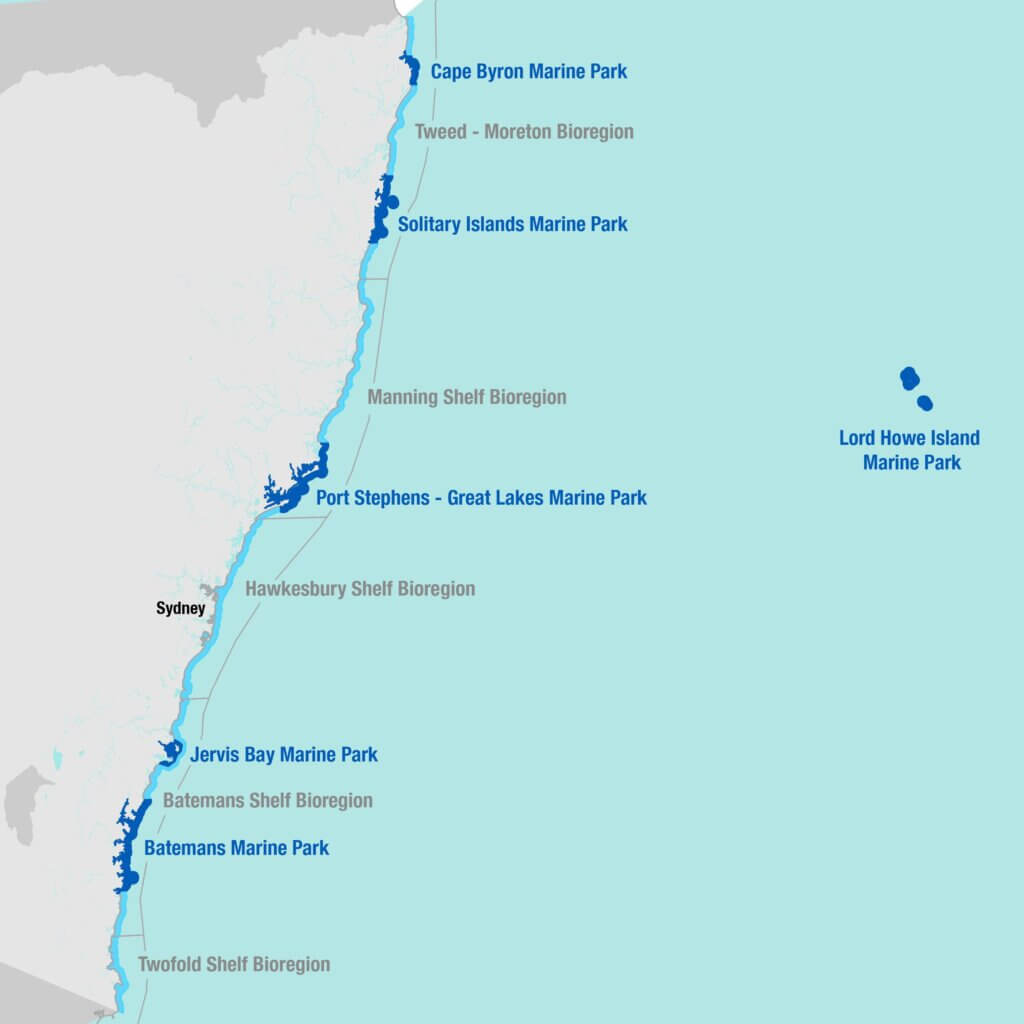Warm tropical currents meet and mix with cool temperate seas in our New South Wales marine parks, creating a world class marine environment on the doorstep of our most populated state.
Why are our New South Wales marine parks important?
Acting like national parks in the ocean, marine sanctuaries set aside areas for marine life to be protected from extractive activities like commercial fishing and mining while still remaining open for other activities like swimming, snorkelling, tourism activities and recreational boating. Marine sanctuaries are backed by Australia’s marine science community as a tried and tested way to protect biodiversity and restore fish stocks1. If NSW can increase the amount of coastline and ocean sheltered in marine sanctuaries, we could protect marine life. When we protect marine life, we also protect the industries, communities and cultures that rely on it across the state for generations to come.
Key areas of the NSW marine park estate
Off the coast of New South Wales, warm tropical currents like the East Australian Current meet and mix with cool temperate seas. The mixing creates world class marine environments on the doorstep of our most populated state. A seascape of mountain chains, deep sea canyons, islands and reefs form ecosystems found nowhere else on Earth.
Our New South Wales marine parks are home to a wide variety of species, including the majestic humpback whale, critically endangered grey nurse sharks, the threatened black cod, weedy sea-dragons, blue groper and unique subtropical corals.
The NSW marine park estate is built on the back of five major marine parks along the coast and one offshore at Lord Howe Island. Some parts of these marine parks, the fully protected marine sanctuary zones, provide spectacular safe havens for marine life to recover.
But that isn’t the case for most of the estate. The six large marine parks in NSW waters are multi-use. That means both commercial and recreational fishing is currently permitted in around 80% of most marine parks in NSW and less than 7% of the NSW coastline is fully protected in marine sanctuaries.

Map of the six major marine parks in the NSW marine park estate as of October 2023. Not to exact scale.
References:
- David J. Booth and Giglia A. Beretta, Creating a world class Marine Protected Area system – getting New South Wales back on track. Independent Report published by the Australian Marine Conservation Society.